What's in the Box? Interrogate Your Linux Machine's Hardware
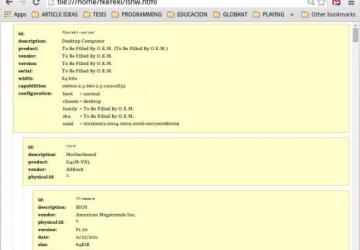
I recently had a problem trying to install the NVIDIA driver for my machine. It seemed the latest driver had stopped supporting my graphics card, and after updating my kernel, I was out of a driver. The question, obviously, was "which card did I have?" But, I didn't remember. If you have to name the chipset of your motherboard, specify the CPU in your box or get any other kind of hardware-related information, Linux provides several utilities to help you. In my case, I quickly could get the full ID of my graphics card, confirm that it really was getting a bit long in the tooth and decide that a newer one wasn't such a bad idea.
In this article, I discuss several ways of getting hardware data for your machine. In the most time-honored Linux shell way, I show how to work with several command-line utilities, but if you prefer using a GUI, I also include some graphical programs. And, if you want to get into the nitty-gritty details, I give some pointers on how to get that information by using the /proc or /sys filesystem.
Glossary
Working with hardware means dealing with several acronyms, and I must admit, I had been using at least a couple of them without remembering precisely what they meant. Here's a list of definitions you'll surely need:
-
ACPI (Advanced Configuration and Power Interface): related to power aspects.
-
AGP (Accelerated Graphics Port): a channel to allow attaching a video graphics card (not typically seen since around 2008).
-
APM (Advanced Power Management): older than ACPI, also related to power issues.
-
ATA (AT Attachment): "AT", as in the old IBM AT, a standard to connect storage devices, superseded by SATA in 2003.
-
BIOS (Basic Input/Output System): firmware used when booting an Intel-compatible PC.
-
DMA (Direct Memory Access): a feature that allows giving hardware access to RAM, independently of the CPU.
-
DMI (Desktop Management Interface): a framework for keeping track of devices in a computer.
-
IDE (Integrated Drive Electronics): an interface standard that later evolved into ATA.
-
IRQ (Interrupt ReQuest): a hardware signal that allows an interrupt handler to process a given event.
-
PCI (Peripheral Component Interconnect): a bus standard for attaching varied hardware devices to a computer, created in 1992.
-
UEFI (Unified EFI—Extensible Firmware Interface): a 2005 replacement for BIOS, which deprecated the previous 1998 EFI standard.
-
USB (Universal Serial Bus): a standard bus defined in 1995 to allow connecting all kinds of peripherals to a computer.
-
PATA (Parallel ATA): the new name for ATA, after SATA came out.
-
PCIe (PCI Express): a high-speed serial bus that replaced PCI and AGP in 2004.
-
RAID (Redundant Array of Independent—originally, "Inexpensive"—Disks): a data storage virtualization technology that combines several drives to work as a single one for performance improvement and/or data redundancy. There are several RAID schemes, including RAID 0 ("striping"), RAID 1 ("mirroring"), RAID 5 ("striping + parity") and RAID 10 ("striping + mirroring").
-
SATA (Serial ATA): a bus interface to connect storage devices, currently used in practically all PCs.
-
SCSI (Small Computer System Interface—pronounced "scuzzy"): a set of standards for connection of devices and transfer of data between computers and peripherals.
The ls Command Family
Let's start the command-line work with a set of several utilities,
whose names all start with ls (Table 1). Some of
these commands provide overlapping information
(lsdev or lshw,
for instance), but by using all of them, you can get a pretty clear idea
of whatever may be inside your Linux box.
| Command | Description |
lsblk |
Produces information about all block devices, such as hard disks, DVD readers and more. |
lscpu |
Shows information like number of CPUs, cores, threads and more. |
lsdev |
Displays data about all devices of which the system is aware. |
lshw |
Lists general hardware data—gives information on every detail of your hardware. |
lspci |
Displays information about PCI buses in your box and devices connected to them, such as graphics cards, network adapters and more. |
lsscsi |
Provides information on all SCSI devices or hosts attached to your box, such as hard disk drives or optical drives. |
lsusb |
Generates information about USB buses in your box and devices connected to them. |
Let's start with CPU information. The lscpu command provides data on
the CPUs in your box. You can opt to include all CPUs, whether off-line
or on-line, with the -.all parameter, or you can select
--online
and --offline. The --parse option
lets you choose what CPU
characteristics to list, including number, socket, cache data, maximum
and minimum speed (in MHz) and more. In my case, you'll see
that my machine has a somewhat old single-socket, four-core, Intel
Core 2 Quad CPU, at 2.66GHz:
> lscpu
Architecture: x86_64
CPU op-mode(s): 32-bit, 64-bit
Byte Order: Little Endian
CPU(s): 4
On-line CPU(s) list: 0-3
Thread(s) per core: 1
Core(s) per socket: 4
Socket(s): 1
NUMA node(s): 1
Vendor ID: GenuineIntel
CPU family: 6
Model: 23
Model name: Intel(R) Core(TM)2 Quad CPU Q8400 @ 2.66GHz
Stepping: 10
CPU MHz: 2003.000
CPU max MHz: 2670.0000
CPU min MHz: 2003.0000
BogoMIPS: 5340.67
Virtualization: VT-x
L1d cache: 32K
L1i cache: 32K
L2 cache: 2048K
NUMA node0 CPU(s): 0-3
(Note: you can get most of this information by examining the /proc/cpuinfo file or by browsing the /sys/bus/cpu/ directories; see the DIY with /proc and /sys sidebar for more on this.)
Let's move on to block devices, such as hard disks, or CD and DVD
units. The lsblk command produces information on all available block
devices (see Listing 1 for an example). As you can see, I have three hard
disks and a ROM (DVD) device. The three disks are known as /dev/sda,
/dev/sdb and /dev/sdc; the ROM device is /dev/sr0. The disks are
466GB, 149GB and 2.7TB in size. You can get a little information about
partitioning too; for instance, you can see that the first two disks
have a swap area enabled, but the third one doesn't. You also can get
the mountpoints (/, /disk-laptop and /disk-data) for the three disks.
Listing 1. The lsblk command shows all block (storage) devices. The
--topology option adds extra details; try
--output-all for even
more.
> lsblk --paths
NAME MAJ:MIN RM SIZE RO TYPE MOUNTPOINT
/dev/sda 8:0 0 465.8G 0 disk
|__/dev/sda1 8:1 0 4G 0 part [SWAP]
|__/dev/sda2 8:2 0 461.8G 0 part /
/dev/sdb 8:16 0 149.1G 0 disk
|__/dev/sdb1 8:17 0 4G 0 part [SWAP]
|__/dev/sdb2 8:18 0 145G 0 part /disk-laptop
/dev/sdc 8:32 0 2.7T 0 disk
|__/dev/sdc1 8:33 0 2.7T 0 part /disk-data
/dev/sr0 11:0 1 1024M 0 rom
> lsblk --paths --topology
NAME ALIGNMENT MIN-IO OPT-IO PHY-SEC LOG-SEC ROTA SCHED RQ-SIZE RA WSAME
sda 0 512 0 512 512 1 cfq 128 128 0B
|__sda1 0 512 0 512 512 1 cfq 128 128 0B
|__sda2 0 512 0 512 512 1 cfq 128 128 0B
sdb 0 512 0 512 512 1 cfq 128 128 0B
|__sdb1 0 512 0 512 512 1 cfq 128 128 0B
|__sdb2 0 512 0 512 512 1 cfq 128 128 0B
sdc 0 4096 0 4096 512 1 cfq 128 128 0B
|__sdc1 0 4096 0 4096 512 1 cfq 128 128 0B
sr0 0 512 0 512 512 1 cfq 128 128 0B
There are many possible optional arguments, but the most typically used are
--paths, which produces full device paths, and
--topology,
if you are interested in internal details, such as physical sector size,
I/O scheduler name and so on. You can get owner, group and permissions
information with --perm, as shown below (and, if you
really want detailed
information, try --output-all, which will list about
50 columns' worth of data):
> lsblk --perm
NAME SIZE OWNER GROUP MODE
sda 465.8G root disk brw-rw----
|__sda1 4G root disk brw-rw----
|__sda2 461.8G root disk brw-rw----
sdb 149.1G root disk brw-rw----
|__sdb1 4G root disk brw-rw----
|__sdb2 145G root disk brw-rw----
sdc 2.7T root disk brw-rw----
|__sdc1 2.7T root disk brw-rw----
sr0 1024M root cdrom brw-rw----
For SCSI devices, you can add --scsi to
lsblk, but there's
also the more specific lsscsi command. The basic
information it produces is shown below, and it includes all available SCSI
devices.
In my case, it shows the three hard disks and the optical reader I already
found with lsblk, plus three card readers. Note that you also get
more information on specific brands and models. For example, I have two
Western Digital hard drives (WD5000AAKS and WD30EZRX), plus a Maxtor
laptop drive (STM316021) and a Sony AD-7200S DVD unit:
> lsscsi
[2:0:0:0] disk ATA WDC WD5000AAKS-0 1D05 /dev/sda
[2:0:1:0] disk ATA MAXTOR STM316021 D /dev/sdb
[3:0:0:0] disk ATA WDC WD30EZRX-00M 0A80 /dev/sdc
[3:0:1:0] cd/dvd SONY DVD RW AD-7200S 1.61 /dev/sr0
[4:0:0:0] disk Sony Card_R/W -CF 1.11 /dev/sdd
[4:0:0:1] disk Sony Card_R/W -SD 1.11 /dev/sde
[4:0:0:2] disk Sony Card_R/W -MS 1.11 /dev/sdf
Check out all the possibilities of this command with lsscsi
--help.
You'll see that you really can dig down into SCSI devices with
it. And, if you're interested, this command works by scanning the /sys
filesystem (see Resources, and the DIY with /proc and /sys
sidebar for more information).
Now, let's move on to some other commands. lsusb provides
information on all USB-connected devices; see Listing 2 for an example. (An
alternative is usb-devices, but it's somewhat more obscure
in its output and has no configuration options.) As in most modern
computers, you'll probably have a lot of such devices. In my case, I
have a Bluetooth dongle, Webcam, keyboard, mouse and more. You
can get information on a specific bus or device with the
-s
option or select a given vendor with the -d option; for the latter, check the USB ID repository (see Resources) for
vendor/device numbers. Finally, if you want very detailed information,
try the -v (verbose) option, but be prepared to
read a lot.
For my machine, lsusb -v produces more than 1,300
lines of output.
Listing 2. The lsusb command reports all USB-connected devices, as a list
or in tree form.
> lsusb
Bus 001 Device 001: ID 1d6b:0002 Linux Foundation
↪2.0 root hub
Bus 005 Device 002: ID 054c:01bd Sony Corp. MRW62E
↪Multi-Card Reader/Writer
Bus 005 Device 001: ID 1d6b:0001 Linux Foundation 1.1
↪root hub
Bus 004 Device 001: ID 1d6b:0001 Linux Foundation 1.1
↪root hub
Bus 003 Device 002: ID 0a12:0001 Cambridge Silicon
↪Radio, Ltd Bluetooth Dongle (HCI mode)
Bus 003 Device 006: ID 1e4e:0100 Cubeternet WebCam
Bus 003 Device 005: ID 046d:c317 Logitech, Inc.
↪Wave Corded Keyboard
Bus 003 Device 004: ID 04f3:0232 Elan
↪Microelectronics Corp. Mouse
Bus 003 Device 003: ID 05e3:0608 Genesys Logic,
↪Inc. Hub
Bus 003 Device 001: ID 1d6b:0001 Linux Foundation
↪1.1 root hub
Bus 002 Device 001: ID 1d6b:0001 Linux Foundation
↪1.1 root hub
> lsusb --tree
/: Bus 05.Port 1: Dev 1, Class=root_hub, Driver=uhci_hcd/2p, 12M
|__ Port 2: Dev 2, If 0, Class=Mass Storage,
↪Driver=usb-storage, 12M
/: Bus 04.Port 1: Dev 1, Class=root_hub, Driver=uhci_hcd/2p, 12M
/: Bus 03.Port 1: Dev 1, Class=root_hub, Driver=uhci_hcd/2p, 12M
|__ Port 1: Dev 3, If 0, Class=Hub, Driver=hub/4p, 12M
|__ Port 1: Dev 4, If 0, Class=Human Interface Device,
↪Driver=usbhid, 1.5M
|__ Port 2: Dev 5, If 0, Class=Human Interface Device,
↪Driver=usbhid, 1.5M
|__ Port 2: Dev 5, If 1, Class=Human Interface Device,
↪Driver=usbhid, 1.5M
|__ Port 3: Dev 6, If 0, Class=Video, Driver=uvcvideo, 12M
|__ Port 3: Dev 6, If 1, Class=Video, Driver=uvcvideo, 12M
|__ Port 2: Dev 2, If 0, Class=Wireless, Driver=btusb, 12M
|__ Port 2: Dev 2, If 1, Class=Wireless, Driver=btusb, 12M
/: Bus 02.Port 1: Dev 1, Class=root_hub, Driver=uhci_hcd/2p, 12M
/: Bus 01.Port 1: Dev 1, Class=root_hub, Driver=ehci-pci/8p, 480M
Another command that can produce a ton of
information is lspci, which shows all data on PCI devices. And,
as a matter of fact, this is the actual command I used to remember what
kind of graphics card I had:
# lspci
00:00.0 Host bridge: Intel Corporation 4 Series
↪Chipset DRAM Controller (rev 03)
00:01.0 PCI bridge: Intel Corporation 4 Series
↪Chipset PCI Express Root Port (rev 03)
00:1b.0 Audio device: Intel Corporation NM10/ICH7
↪Family High Definition Audio Controller (rev 01)
00:1c.0 PCI bridge: Intel Corporation NM10/ICH7
↪Family PCI Express Port 1 (rev 01)
00:1c.1 PCI bridge: Intel Corporation NM10/ICH7
↪Family PCI Express Port 2 (rev 01)
00:1d.0 USB controller: Intel Corporation NM10/ICH7
↪Family USB UHCI Controller #1 (rev 01)
00:1d.1 USB controller: Intel Corporation NM10/ICH7
↪Family USB UHCI Controller #2 (rev 01)
00:1d.2 USB controller: Intel Corporation NM10/ICH7
↪Family USB UHCI Controller #3 (rev 01)
00:1d.3 USB controller: Intel Corporation NM10/ICH7
↪Family USB UHCI Controller #4 (rev 01)
00:1d.7 USB controller: Intel Corporation NM10/ICH7
↪Family USB2 EHCI Controller (rev 01)
00:1e.0 PCI bridge: Intel Corporation 82801 PCI
↪Bridge (rev e1)
00:1f.0 ISA bridge: Intel Corporation 82801GB/GR
↪(ICH7 Family) LPC Interface Bridge (rev 01)
00:1f.1 IDE interface: Intel Corporation 82801G (ICH7
↪Family) IDE Controller (rev 01)
00:1f.2 IDE interface: Intel Corporation NM10/ICH7
↪Family SATA Controller [IDE mode] (rev 01)
00:1f.3 SMBus: Intel Corporation NM10/ICH7 Family
↪SMBus Controller (rev 01)
01:00.0 Ethernet controller: Qualcomm Atheros AR8152
↪v2.0 Fast Ethernet (rev c1)
04:00.0 VGA compatible controller: NVIDIA Corporation
↪GK107 [GeForce GT 740] (rev a1)
04:00.1 Audio device: NVIDIA Corporation GK107 HDMI
↪Audio Controller (rev a1)
Try the -v or -vv options, for verbose and very verbose
listings. To get full information on my (current) graphics card, I
proceeded as shown in Listing 3. I now have an NVIDIA GeForce 740, and I'm using
the nouveau kernel driver, among other internal details. Of course,
to understand the produced information fully, you must have a bit of
experience with PCI devices. Try the same command with
-vv, and
you'll see what I'm talking about.
Listing 3. The -v option provides more detailed
information; -vv goes
even deeper.
# lspci -v -s 4:00.0
04:00.0 VGA compatible controller: NVIDIA Corporation
↪GK107 [GeForce GT 740] (rev a1)
↪(prog-if 00 [VGA controller])
Subsystem: eVga.com. Corp. Device 2742
Flags: bus master, fast devsel, latency 0, IRQ 27
Memory at fd000000 (32-bit, non-prefetchable) [size=16M]
Memory at e0000000 (64-bit, prefetchable) [size=256M]
Memory at de000000 (64-bit, prefetchable) [size=32M]
I/O ports at ec00 [size=128]
[virtual] Expansion ROM at fe000000 [disabled] [size=512K]
Capabilities: [60] Power Management version 3
Capabilities: [68] MSI: Enable+ Count=1/1 Maskable- 64bit+
Capabilities: [78] Express Endpoint, MSI 00
Capabilities: [b4] Vendor Specific Information: Len=14
Capabilities: [100] Virtual Channel
Capabilities: [128] Power Budgeting
Capabilities: [600] Vendor Specific Information: ID=0001
↪Rev=1 Len=024
Capabilities: [900] #19
Kernel driver in use: nouveau
Kernel modules: nouveau
If you are even more electronically/digitally minded,
lsdev
produces information about your installed hardware, including interrupts,
ports, addresses and all such internal details. This command provides no
options, and it's not likely you'll use it unless you are dealing very
closely with hardware. Listing 4 shows an abbreviated example of
the output. This command scans /proc/interrupts, /proc/ioports
and /proc/dma, as described in the DIY with /proc and /sys
sidebar.
Listing 4. The lsdev command provides information on interrupts, ports
and direct memory access.
> lsdev
Device DMA IRQ I/O Ports
------------------------------------------------
7
0000:00:1d.0 c480-c49f
0000:00:1d.1 c800-c81f
0000:00:1d.2 c880-c89f
...
... (several lines snipped out)
...
eth0 29
fpu 00f0-00ff
gpio_ich 0480-04bf 04b0-04bf
i801_smbus 19 0400-041f
i8042 1 12
iTCO_wdt 0830-0833 0830-0833 0860-087f 0860-087f
keyboard 0060-0060 0064-0064
...
... (several lines snipped out)
...
timer 0
timer0 0040-0043
timer1 0050-0053
uhci_hcd c480-c49f c800-c81f c880-c89f cc00-cc1f
uhci_hcd:usb2 23
uhci_hcd:usb3 19
uhci_hcd:usb4 18
uhci_hcd:usb5 16
vesafb 03c0-03df
Finally, if you've made it this far, the lshw
command is a sort of
catch-all that can produce lots of information on all of your
installed hardware. The -short option provides a (somewhat)
abbreviated listing of everything in your box (see Listing 5, and note
some interesting lines, "To Be Filled By O.E.M.", which show that
someone was careless when setting up my motherboard). With this command,
you get information on the system, buses, memory, processor, display,
network and everything else.
Listing 5. The lshw command includes information on all your
hardware."
# lshw -short
H/W path Device Class Description
=============================================================
system To Be Filled
↪By O.E.M.
/0 bus G41M-VS3.
/0/0 memory 64KiB BIOS
/0/4 processor Core 2 Quad (To Be
↪Filled By O.E.M.)
/0/4/5 memory 128KiB L1 cache
/0/4/6 memory 4MiB L2 cache
/0/d memory 4GiB System Memory
/0/d/0 memory 4GiB DIMM SDRAM
↪Synchronous
/0/d/1 memory DIMM [empty]
/0/100 bridge 4 Series Chipset
↪DRAM Controller
/0/100/1 bridge 4 Series Chipset
↪PCI Express Root Port
/0/100/1/0 display GK107 [GeForce
↪GT 740]
/0/100/1/0.1 multimedia GK107 HDMI Audio
↪Controller
/0/100/1b multimedia NM10/ICH7 Family
↪High Definition Audio Controller
/0/100/1c bridge NM10/ICH7 Family
↪PCI Express Port 1
/0/100/1c.1 bridge NM10/ICH7 Family
↪PCI Express Port 2
/0/100/1c.1/0 eth0 network AR8152 v2.0 Fast
↪Ethernet
/0/100/1d bus NM10/ICH7 Family
↪USB UHCI Controller #1
/0/100/1d/1 usb2 bus UHCI Host Controller
/0/100/1d.1 bus NM10/ICH7 Family
↪USB UHCI Controller #2
/0/100/1d.1/1 usb3 bus UHCI Host Controller
/0/100/1d.1/1/1 bus USB2.0 Hub
/0/100/1d.1/1/1/1 input OM
/0/100/1d.1/1/1/2 input USB Multimedia
↪Keyboard
/0/100/1d.1/1/1/3 multimedia USB2.0 Camera
/0/100/1d.1/1/2 communication Bluetooth Dongle
↪(HCI mode)
...several lines snipped out...
/0/1 scsi2 storage
/0/1/0.0.0 /dev/sda disk 500GB WDC
↪WD5000AAKS-0
/0/1/0.0.0/1 /dev/sda1 volume 4102MiB Linux
↪swap volume
/0/1/0.0.0/2 /dev/sda2 volume 461GiB EXT4 volume
/0/1/0.1.0 /dev/sdb disk 160GB MAXTOR
↪STM316021
/0/1/0.1.0/1 /dev/sdb1 volume 4094MiB Linux
↪swap volume
/0/1/0.1.0/2 /dev/sdb2 volume 145GiB EXT3 volume
/0/2 scsi3 storage
/0/2/0.0.0 /dev/sdc disk 3TB WDC
↪WD30EZRX-00M
/0/2/0.0.0/1 /dev/sdc1 volume 2794GiB EXT4 volume
/0/2/0.1.0 /dev/cdrom disk DVD RW AD-7200S
Notice the "class" column in Listing 5. You can get a hint of the
full information that lshw can provide by using the
-class
parameter to limit output. For example, see below the detailed specs on my
network card; it shows the vendor, model and plenty of other details
(warning: this is the kind of output you get if you don't restrict the
command with -short; for my machine,
lshw with no extra
options produces a listing more than 500 lines long):
# lshw -class network
*-network
description: Ethernet interface
product: AR8152 v2.0 Fast Ethernet
vendor: Qualcomm Atheros
physical id: 0
bus info: pci@0000:01:00.0
logical name: eth0
version: c1
serial: bc:5f:f4:12:e0:f1
size: 100Mbit/s
capacity: 100Mbit/s
width: 64 bits
clock: 33MHz
capabilities: pm msi pciexpress vpd bus_master
↪cap_list ethernet physical tp 10bt 10bt-fd
↪100bt 100bt-fd autonegotiation
configuration: autonegotiation=on broadcast=yes
↪driver=atl1c driverversion=1.0.1.1-NAPI
↪duplex=full latency=0 link=yes multicast=yes
↪port=twisted pair speed=100Mbit/s
resources: irq:29 memory:fcfc0000-fcffffff
↪ioport:dc00(size=128)
The lshw command has several other interesting options. For
example, it can produce either HTML or XML output (add the
-html or
-xml options); the former is appropriate for showing in a browser,
while the latter is useful if you want to store or process your hardware
information. See Figure 1 for just a small part of the full hardware
description of my box. For security purposes, the
-sanitize option
removes sensitive information, such as serial numbers. There's
even an -X option to use a graphical interface (I'll
get to that later).
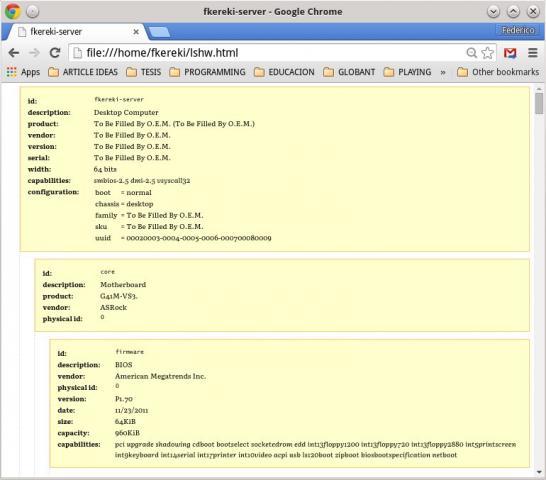
Figure 1. The lshw command also can produce HTML or XML output; the former
is shown here.
So far, I've discussed several ls* commands, and even if they are
not actually a "family", they are my favorite tools. It's easy
to remember them by typing ls and letting type-ahead suggest
the rest. However, there are more command-line possibilities, so let's
take a look.
What's SMBIOS?
How does Linux recognize what devices are installed? Since 1995, the SMBIOS (System Management BIOS) specification has provided this kind of information, doing away with the need for potentially worrisome operations like hardware probing. This standard (used by DMI) is geared to the Intel 32- and 64-bit processor architecture systems. Basically, it defines a structure with appropriate data for each kind of device, such as CPU, RAM, system slots and more. On principle, you could parse and decode this table by yourself, but several of the commands shown in this article already do that job. If you are curious about the specifics of the standard, see the Resources section.
More Command-Line Options
Let's start with some general commands. The first,
dmidecode,
allows you to dump the computer's DMI (or SMBIOS; see the What's
SMBIOS? sidebar) in a more readable format. If the table is found,
its contents are dumped record by record, similar to this:
# dmidecode -t 6
# dmidecode 2.12
SMBIOS 2.5 present.
Handle 0x0009, DMI type 6, 12 bytes
Memory Module Information
Socket Designation: DIMM0
Bank Connections: 0 1
Current Speed: Unknown
Type: DIMM SDRAM
Installed Size: 4096 MB (Double-bank Connection)
Enabled Size: 4096 MB (Double-bank Connection)
Error Status: OK
Handle 0x000A, DMI type 6, 12 bytes
Memory Module Information
Socket Designation: DIMM1
Bank Connections: 4 5
Current Speed: Unknown
Type: DIMM SDRAM
Installed Size: Not Installed
Enabled Size: Not Installed
Error Status: OK
If you don't want to list the entire table (several hundred lines in my computer), you can restrict the output to a specific type of entry, according to SMBIOS definitions (Table 2).
| Type | Description |
| 0 | BIOS |
| 1 | System |
| 2 | Baseboard |
| 3 | Chassis |
| 4 | Processor |
| 5 | Memory Controller |
| 6 | Memory Module |
| 7 | Cache |
| 8 | Port Connector |
| 9 | System Slots |
| 10 | On-board Devices |
| 11 | OEM Strings |
| 12 | System Configuration Options |
| 13 | BIOS Language |
| 14 | Group Associations |
| 15 | System Event Log |
| 16 | Physical Memory Array |
| 17 | Memory Device |
| 18 | 32-bit Memory Error |
| 19 | Memory Array Mapped Address |
| 20 | Memory Device Mapped Address |
| 21 | Built-in Pointing Device |
| 22 | Portable Battery |
| 23 | System Reset |
| 24 | Hardware Security |
| 25 | System Power Controls |
| 26 | Voltage Probe |
| 27 | Cooling Device |
| 28 | Temperature Probe |
| 29 | Electrical Current Probe |
| 30 | Out-of-band Remote Access |
| 31 | Boot Integrity Services |
| 32 | System Boot |
| 33 | 64-bit Memory Error |
| 34 | Management Device |
| 35 | Management Device Component |
| 36 | Management Device Threshold Data |
| 37 | Memory Channel |
| 38 | IPMI Device |
| 39 | Power Supply |
| 40 | Additional Information |
| 41 | Onboard Devices Extended Information |
| 42 | Management Controller Host Interface |
| 126 | Disabled Entry |
| 127 | "End-of-Table" Special Marker |
| 128–255 | OEM-specific Data |
You also can use specific keywords to restrict the output to a few types (Table 3).
| SMBIOS Keyword | SMBIOS Types |
| bios | 0,13 |
| system | 1,12,15,23,32 |
| baseboard | 2,10,41 |
| chassis | 3 |
| processor | 4 |
| memory | 5,6,16,17 |
| cache | 7 |
| connector | 8 |
| slot | 9 |
If I were to give an award for "Most Talkative Command", surely it
would go to hwinfo, another command that can dump all the hardware
information on your computer. On my machine, running
hwinfo without
any parameters produces more than 12,000 lines, including several memory
dumps of the SMBIOS table. You can produce a much more compact version
with the --short option (Listing 6).
Listing 6. The hwinfo command can be quite
talkative; using the --short
option makes it more manageable.
# hwinfo --short
cpu:
Intel(R) Core(TM)2 Quad CPU Q8400 @ 2.66GHz, 2670 MHz
Intel(R) Core(TM)2 Quad CPU Q8400 @ 2.66GHz, 2336 MHz
Intel(R) Core(TM)2 Quad CPU Q8400 @ 2.66GHz, 2670 MHz
Intel(R) Core(TM)2 Quad CPU Q8400 @ 2.66GHz, 2670 MHz
keyboard:
Logitech USB Multimedia Keyboard
mouse:
Elan Microelectronics OM
monitor:
SAMSUNG SA300/SA350
SAMSUNG S20B300
graphics card:
nVidia VGA compatible controller
sound:
Intel NM10/ICH7 Family High Definition Audio Controller
nVidia GK107 HDMI Audio Controller
storage:
Intel 82801G (ICH7 Family) IDE Controller
Intel NM10/ICH7 Family SATA Controller [IDE mode]
network:
eth0 Atheros AR8152 v2.0 Fast Ethernet
network interface:
lo Loopback network interface
eth0 Ethernet network interface
disk:
/dev/sda WDC WD5000AAKS-0
/dev/sdb MAXTOR STM316021
/dev/sdc WDC WD30EZRX-00M
...etc (rest of the listing, snipped out)
You can restrict hwinfo to a specific type of hardware by adding
an option, such as --monitor or
--printer. Get the whole
list of options with hwinfo --help. For instance, I can dump the
optical unit data with hwinfo --cdrom (Listing 7). The
--listmd option lets you include RAID devices, which usually aren't
included in the standard output.
Listing 7. The hwinfo command can restrict its output to specific hardware,
as the cdrom device, for example.
# hwinfo --cdrom
25: SCSI 301.0: 10602 CD-ROM (DVD)
[Created at block.249]
Unique ID: KD9E.SGHalmfn+h9
Parent ID: w7Y8.xyd+qedQTr5
SysFS ID: /class/block/sr0
SysFS BusID: 3:0:1:0
SysFS Device Link: /devices/pci0000:00/0000:00:1f.2/
↪ata4/host3/target3:0:1/3:0:1:0
Hardware Class: cdrom
Model: "SONY DVD RW AD-7200S"
Vendor: "SONY"
Device: "DVD RW AD-7200S"
Revision: "1.61"
Driver: "ata_piix", "sr"
Driver Modules: "ata_piix", "sr_mod"
Device File: /dev/sr0 (/dev/sg3)
Device Files: /dev/sr0, /dev/cdrom, /dev/cdrw,
↪/dev/disk/by-id/ata-Optiarc_DVD_RW_AD-7200S,
↪/dev/disk/by-path/pci-0000:00:1f.2-ata-2.1,
↪/dev/dvd, /dev/dvdrw
Device Number: block 11:0 (char 21:3)
Features: CD-R, CD-RW, DVD, DVD-R, DVD-RW, DVD-R DL,
↪DVD+R, DVD+RW, DVD+R DL, DVD-RAM, MRW, MRW-W
Drive status: no medium
Config Status: cfg=no, avail=yes, need=no, active=unknown
Attached to: #14 (IDE interface)
Drive Speed: 48
Of the command-line programs I'm covering in this article,
inxi is
more colorful, even if only moderately (Figure 2).
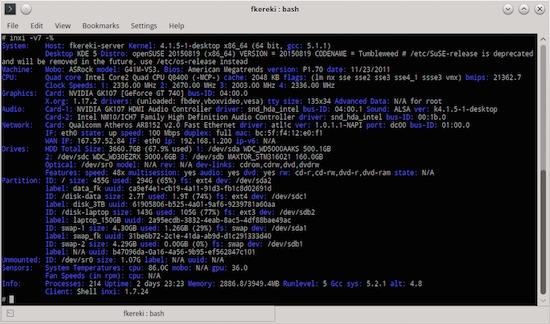
Figure 2. inxi, even if only a command-line tool, at least tries to use some colors.
If invoked with no parameters, it will just produce a line like the following, showing CPU, kernel, uptime and a few more details:
CPU~Quad core Intel Core2 Quad CPU Q8400 (-MCP-)
↪clocked at 2003.000 Mhz Kernel~4.1.5-1-desktop
↪x86_64 Up~2 days 23:24 Mem~2377.4/3949.4MB
↪HDD~3660.7GB(67.9% used) Procs~202 Client~Shell
↪inxi~1.7.24
However, you can use lots of options to get specific data. For
example, you can set the verbosity level with options
-v0
(minimum) through -v7 (maximum verbosity). The
-x option
allows including extra information for some hardware. Check out
inxi -h to get all possible options. For instance, you can
get audio information with inxi -A or graphics card data with
inxi -G and so on:
# inxi -A
Audio: Card-1: NVIDIA GK107 HDMI Audio Controller
↪driver: snd_hda_intel Sound: ALSA ver: k4.1.5-1-desktop
Card-2: Intel NM10/ICH7 Family High
↪Definition Audio Controller driver: snd_hda_intel
Now, let's finish with some GUI options.
The GUI Way
To start with, usbview is a rough graphic equivalent
of lsusb or
usb-devices, which I discussed earlier. It's quite simple to use, with no
options or parameters. It shows two columns: the left one is a tree of
all available USB devices, and the right one gives the full details.
Figure 3 shows details on my USB keyboard.
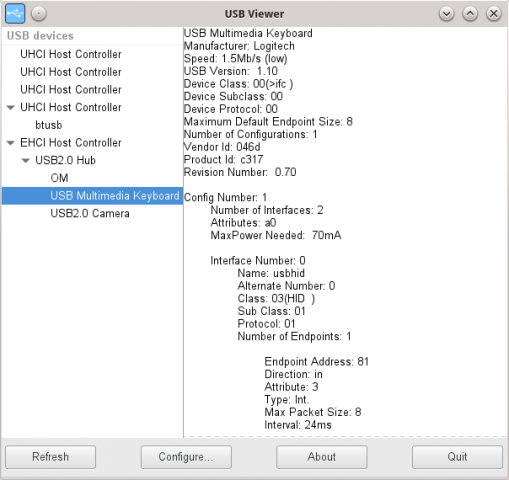
Figure 3. The usbview command shows the details of all USB devices in tree
form.
Let's move on to a command I already discussed, which shares the display
style: lshw -X. Instead of producing a listing (as
shown previously), the
-X option produces a graphic interface with several columns on the
left to let you choose what hardware to inspect. An area to the right
shows the full hardware details for the chosen device. Figure 4 shows the
result of analyzing my optical DVD reader/writer unit; the provided
information includes other details, such as the logical unit name, its
capabilities and more.
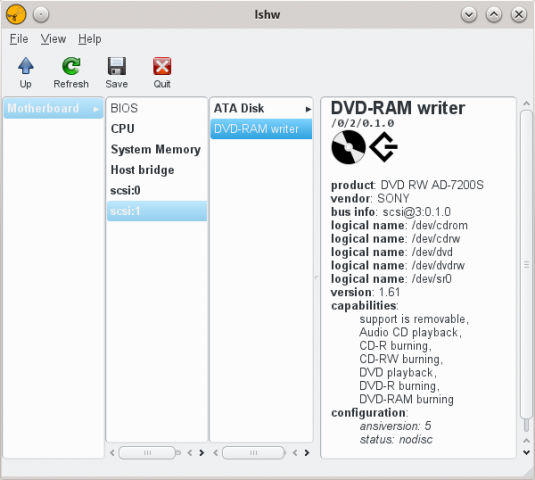
Figure 4. The lswh -X command produces a graphic
interface that lets you browse all hardware devices.
Another interesting program is hardinfo, which
"is not dead, but
needs a maintainer", according to its GitHub page (see Resources.) This
program shows a tree structure to the left with four main branches:
-
Computer shows lots of details about your machine: some are related to software and not to hardware.
-
Devices includes all devices in your box, grouped by category.
-
Network not only shows network card details, but also some other aspects, such as DNS servers or routing.
-
Benchmarks lets you see how your machine fares against other computers, but because of the lack of updates, the comparisons are against old CPUs.
Figure 5 shows sample output.
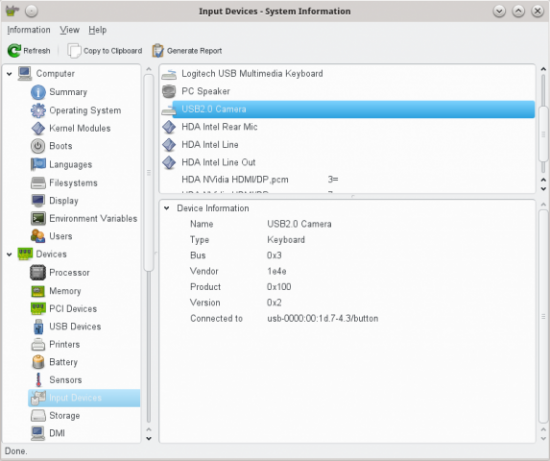
Figure 5. The hardinfo command includes several extra pieces of data, not
limited only to hardware.
There are two more options. The "Information" menu entry allows you to produce a report, in either HTML or plain-text format, choosing whichever parts interest you. The "Network Updater" should let you update the internal program data, including more recent benchmark results, but when I tried to run it, I got a "Contacting HardInfo Central Database (failed)" message. See Figure 6 for a example of the produced HTML report.
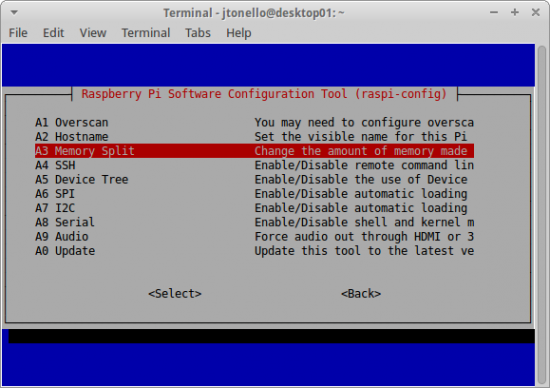
Figure 6. The hardinfo command can produce an HTML or text report describing your complete system.
Let's end with KDE's own kinfocenter. This utility (see Figure 7,
which shows RAM details for my machine) is similar to the previous tools
I've been describing, and it offers a left pane with a tree with all available
options and a right pane with more details on the chosen option at the
left.
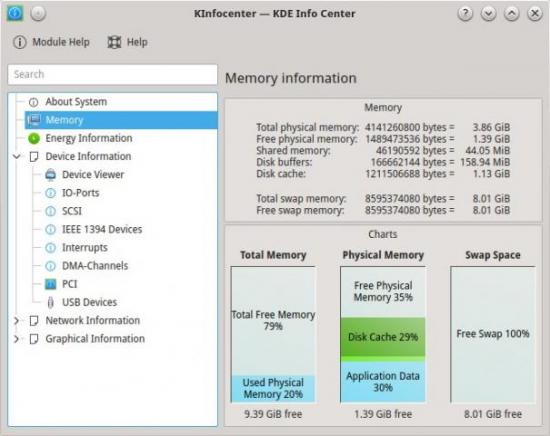
Figure 7. KDE's own kinfocenter shows not only hardware details, but plenty of other system data as well.
The program doesn't restrict itself to hardware details, but shows all kinds of other information, such as "Samba Status", "Energy Information" or "X-Server", just to mention a few.
DIY with /proc and /sys
Linux is full of directories and files, but the /proc and /sys directories are really strange. They don't actually exist, but they allow you to browse them. They are full of zero-length empty files, but you can open and view them. The /proc directory preceded /sys, and it has basically all details about running processes (hence, the /proc name). Over time, more files were added to it, mostly "virtual" ones, which don't actually exist, but are created on the fly if you try to access them. (Most virtual files sport a current timestamp, which shows that they constantly are kept up to date and their contents are the latest possible.) The /sys directory is more modern. It appeared around the time of the 2.6 kernel to introduce more order and a better structure than provided by the older /proc, which had just grown in a sort of haphazard way. Many of the files (but not all) in /proc are duplicated in /sys, and whenever possible, you should pick the files in the latter directory. The /sys directory has several subdirectories:
-
block/ has an entry pointing to each block device.
-
bus/ has directories for each bus type, and within each, two subdirectories: devices/ and drivers/. The former has a directory for each device, pointing to the device's directory in /root, and the latter has a directory for each driver that was loaded for devices on the given bus.
-
class/ has directories for each type of object; some examples are block/, graphics/, net/, sound/ and so on.
-
dev/ provides directories for each type of device (for example, dev/block/ or dev/char/), each with directories for each appropriate device.
-
devices/ contains the global device hierarchy, with every physical device in your system.
-
firmware/ includes directories for firmware-specific objects; for example, acpi/ or memmap/, but the particular directories in your own machine depend on the firmware drivers in your kernel.
-
fs/ has a directory for each filesystem type in your machine, each with further directories for each specific device; for example, I have /sys/fs/ext4/sda2, because the disk mounted as /dev/sda2 uses ext4.
-
kernel/ has several files related to the currently loaded kernel.
-
module/ has a subdirectory for each and every module loaded into the kernel.
-
power/ represents the power subsystem.
When you get to the deepest levels of any branch, you may find any number of individual files, which you can read to get attributes of the given object. What files? That's a hard question to answer, because it depends on which specific branch you are visiting, so you'll have to do a bit of work before you get to extract information from the /sys directory. (See Resources for some pointers about this.) Also, be aware that you can write to some of the files, and that will imply modifying the corresponding parameter—be warned: do this with care! However, if you keep at it, you'll be able to duplicate the functionality of most of the tools shown in this article, which often work the same way.
Conclusion
I've covered a lot of commands that let you query your Linux machine and learn, in more or less detail, what's exactly in it. And if you need to, you even can get at the base data by yourself and whip up your own hardware-inspection tool.
Resources
Read about the SMBIOS standard at https://www.dmtf.org/standards/smbios. At the time of this writing, the latest version is 3.0.0, dated 2/15/2015.
You can find information on sysfs at
https://www.kernel.org/doc/Documentation/filesystems/sysfs.txt and more
specific documentation at
https://www.kernel.org/doc/Documentation/ABI/stable.
Regarding the older procfs, check
https://www.kernel.org/doc/Documentation/filesystems/proc.txt.
The USB ID repository at https://www.linux-usb.org/usb-ids.html has the full list of all known IDs used in USB devices.
The PCI ID repository at https://www.pcidatabase.com provides a centralized list of PCI device IDs.
The lscpu and lsblk commands are part of the util-linux
package, available at https://www.kernel.org/pub/linux/utils/util-linux.
For documentation, check out https://linux.die.net/man/1/lscpu and
https://linux.die.net/man/8/lsblk, respectively.
Read about lsscsi options at https://sg.danny.cz/scsi/lsscsi.html and
find a manual page at https://linux.die.net/man/8/lsscsi.
For the lsdev man page, see https://linux.die.net/man/8/lsdev.
The lshw home page is at
https://www.ezix.org/project/wiki/HardwareLiSter, and its
manual page is
at https://linux.die.net/man/1/lshw.
See lsusb in the "usbutils" page at
https://github.com/gregkh/usbutils, and get more information at
https://linux.die.net/man/8/lsusb.
You can find lspci at (home of the "PCI
Utilities") and the man page at .
Check out usbview at https://www.kroah.com/linux/usb and its man page
at https://linux.die.net/man/8/usbview.
The hardinfo source repository is at
https://github.com/lpereira/hardinfo, but first check your distribution's
repositories; it's likely to already be there. Note that the program's last
update was more than two years ago, and no further maintenance has been done.
You can find KInfoCenter at https://www.kde.org/applications/system/kinfocenter.









